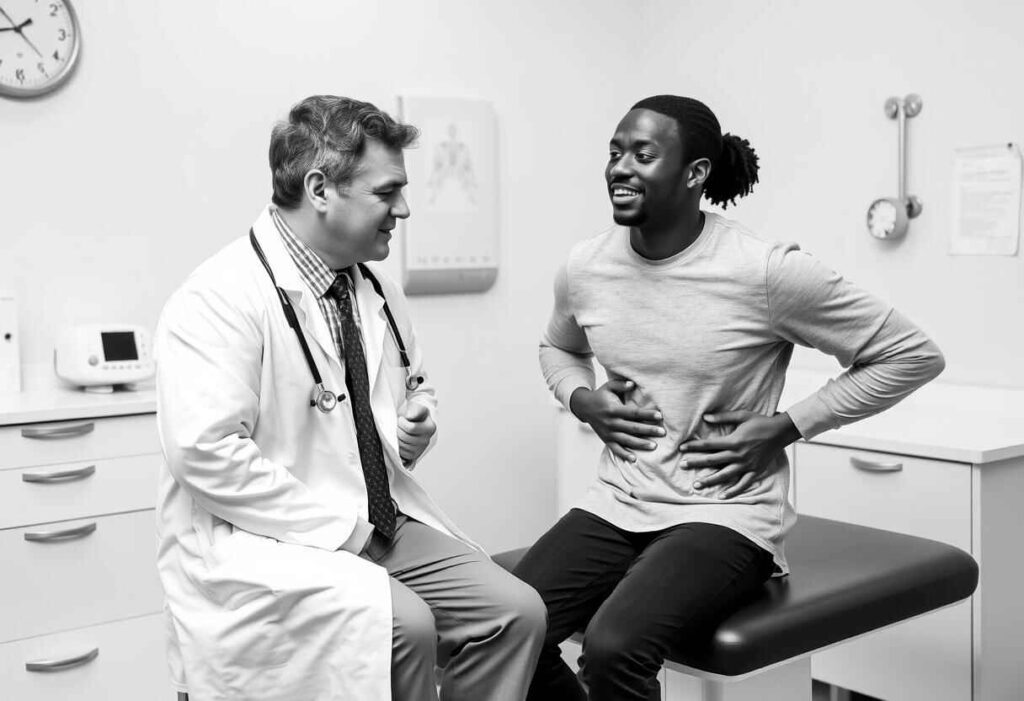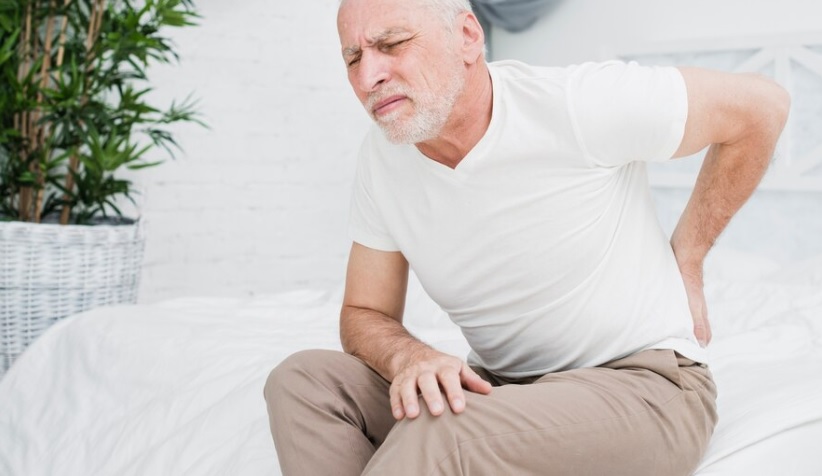Kidney stones are known for causing intense pain, usually felt as a sharp, cramp-like ache in your lower back or belly. But what if you’re feeling that kind of pain, and it’s not a kidney stone? There are other health issues that can cause similar pain, which can be confusing and concerning.
This article explores these other conditions that can seem like kidney stone pain, explaining their symptoms and how to get the right diagnosis.
Why Kidney Stones Can Be Confusing
Kidney stones are hard mineral chunks that develop in the kidneys. They can make your body feel pain in unexpected places. This kind of pain, known as referred pain, happens because the nerves send signals to other parts of the body. So, even though the stones are in the kidneys, you might feel pain in:
- Your lower back (around your sides)
- Your groin area
- Your lower belly
- Your testicles (if you’re a man)

Conditions That Feel Like Kidney Stones
Kidney stone pain can hurt a lot, but there are other problems that can seem just like it. Here are some usual suspects:
- Urinary Tract Infections (UTIs): These are infections caused by bacteria in your urinary system. They can make you feel like you have a kidney stone because they cause a burning feeling when you pee, make you pee a lot, and give you pain in your pelvis. But unlike kidney stones, they usually don’t come with intense waves of pain.
- Appendicitis: This is when your appendix gets swollen and sore. It usually starts with pain around your belly button and moves to the lower right part of your belly. Sometimes, it can feel like kidney stone pain in your side. But appendicitis also gives you other signs like feeling sick, throwing up, and having a fever.
- Muscle Spasms: Sometimes, muscles in your back or belly can get strained or twitch, feeling a lot like kidney stone pain, especially if it’s deep in your muscles. But unlike kidney stones, this pain usually doesn’t come and go in waves and gets better when you rest and take pain meds.
- Ovarian Cyst Rupture: Women can get cysts, which are fluid-filled sacs, on their ovaries. If one of these cysts breaks, it can cause a sudden, sharp pain in your belly or pelvis, which might spread to your back and feel like kidney stone pain.
- Pelvic Inflammatory Disease (PID): This is an infection in the reproductive organs of women. It can make your lower belly hurt, which might feel like kidney stones. But PID also gives you other signs like unusual discharge from your vagina, having a fever, and bleeding at strange times.
- Endometriosis: This is when tissue that’s like the lining of your uterus grows outside of it. It can make your belly hurt, especially during your period or when you ovulate. Sometimes, this pain can feel like kidney stone pain, especially if it spreads to your back.
- Peptic Ulcers: These are sores in your stomach or the first part of your small intestine. They can make a sharp, burning pain in the top part of your belly, which might spread to your back and feel like kidney stone pain. But peptic ulcer pain often goes away with antacids and gets worse with certain foods.
- Shingles: This is a condition caused by the chickenpox virus coming back. It makes a burning, stabbing pain along a nerve in your body. If it’s in your lower back or belly, it might feel like kidney stone pain. Shingles also usually gives you a rash with blisters.
Detailed Table of Conditions Mimicking Kidney Stone Pain
| Condition | Location of Pain | Type of Pain | Associated Symptoms | Differentiating Factors |
| Urinary Tract Infection | Lower abdomen, possibly radiating | Burning, discomfort | Frequent urination, urgency, cloudy urine | Typically lacks intense cramping pain |
| Appendicitis | Lower right abdomen, initially around navel | Sharp, progressively worse | Nausea, vomiting, fever | Pain shifts to lower right abdomen |
| Gallstones | Upper right abdomen, radiating to back/shoulder | Sharp, sudden | Nausea, vomiting, jaundice | Pain in upper abdomen, often after eating |
| Diverticulitis | Lower left abdomen | Cramping, severe | Fever, bloating, changes in bowel habits | Localized to the lower left abdomen |
| Musculoskeletal Issues | Lower back, possibly radiating | Dull, aching, or sharp | Pain on movement or certain positions | Pain varies with movement/position |
| Ovarian Cysts | Lower abdomen, pelvic area | Dull, aching, or sharp | Irregular periods, bloating, pain during intercourse | Gynecological history, menstrual irregularities |
| Ectopic Pregnancy | Lower abdomen, pelvis | Severe, sharp | Vaginal bleeding, dizziness, shoulder pain | Positive pregnancy test, history of missed periods |
| Gastrointestinal Issues | Lower abdomen, may radiate | Cramping, sharp | Diarrhea, bloating, weight loss (Crohn’s) | Associated with bowel movements |
When to Get Medical Help
When you feel intense pain in your lower back, belly, or groin, it’s really important to see a doctor right away. Getting help early can stop problems and make sure you get the right treatment. Don’t wait to see a doctor or go to the emergency room if you have any of these signs:
- Really bad and constant pain
- Blood in your pee
- Feeling sick and throwing up
- Having a fever
- Trouble peeing
Diagnosis
Doctors will probably ask you about your health history and check your body. They might also do a urine test to see if there’s blood or infection. And they might use special machines like X-rays, ultrasounds, or CT scans to look inside and see if there are kidney stones or other reasons for your pain.
Here is a detailed table summarizing the diagnostic approaches for each condition:
| Condition | Initial Diagnostic Steps | Physical Examination Findings | Laboratory Tests | Imaging Studies | Special Considerations |
| Kidney Stones | History of sudden, severe flank pain; hematuria | Flank tenderness, sometimes radiating pain | Urinalysis (hematuria), serum creatinine | Non-contrast CT scan, ultrasound | History of similar episodes |
| Urinary Tract Infection | History of dysuria, urgency, frequency | Suprapubic tenderness, no costovertebral angle (CVA) tenderness | Urinalysis (pyuria, bacteriuria), urine culture | Not typically needed unless complicated UTI | Recent history of sexual activity, catheters |
| Appendicitis | Sudden onset of abdominal pain, initially periumbilical | McBurney’s point tenderness, rebound tenderness | Elevated WBC count (leukocytosis) | Abdominal ultrasound, CT scan | Pain migration from navel to RLQ |
| Gallstones | History of right upper quadrant pain, especially after eating fatty foods | Murphy’s sign (pain on palpation of RUQ during inspiration) | Normal or mildly elevated liver enzymes | Abdominal ultrasound, HIDA scan | Pain related to eating, especially fatty meals |
| Diverticulitis | History of left lower quadrant pain, bowel changes | LLQ tenderness, sometimes with guarding | Elevated WBC count, CRP | CT scan of abdomen with contrast | Associated with changes in bowel habits |
| Musculoskeletal Issues | History of recent physical activity or trauma | Tenderness over muscles, limited range of motion | Not typically indicated unless specific conditions are suspected | MRI if herniated disc or nerve compression is suspected | Pain worsens with movement or certain positions |
| Ovarian Cysts | History of pelvic pain, menstrual irregularities | Lower abdominal or pelvic tenderness | Pregnancy test (to rule out ectopic pregnancy) | Pelvic ultrasound | Pain may be cyclical, related to menstrual cycle |
| Ectopic Pregnancy | History of missed period, positive pregnancy test | Lower abdominal tenderness, possible cervical motion tenderness | Positive pregnancy test, elevated beta-hCG | Transvaginal ultrasound | Medical emergency requiring prompt diagnosis |
| Gastrointestinal Issues | History of cramping abdominal pain, changes in bowel habits | Abdominal tenderness, often diffuse | CBC, CRP, fecal calprotectin (for Crohn’s) | Colonoscopy (for IBD), abdominal CT scan | Consider food triggers, stress factors |
Conclusion
Kidney stones often cause pain, but there are other conditions with similar symptoms. Knowing about these conditions and their signs can help you take better care of your health. It’s important to get diagnosed early so you can get the right treatment and feel better faster. If you’re in a lot of pain or have other worrying symptoms, don’t wait to see a doctor.

